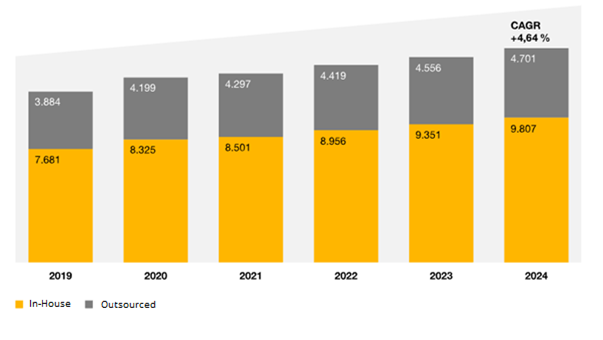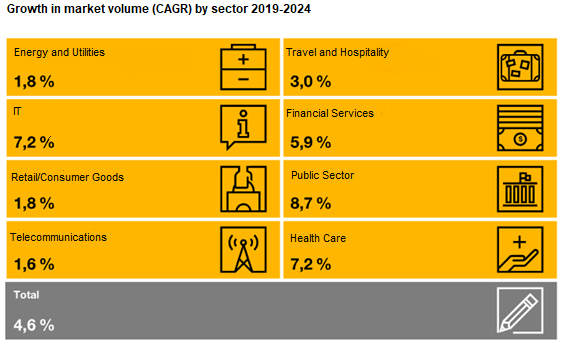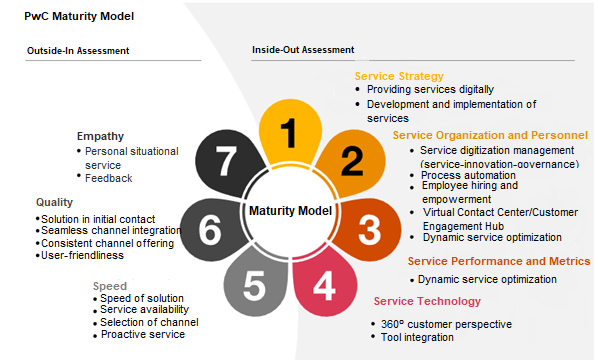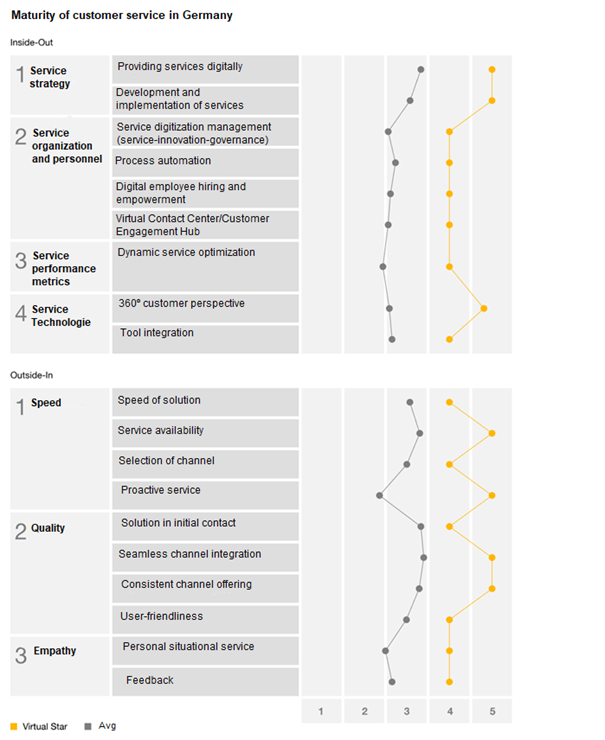A study by PWC indicates that changes in customer service can be characterized by eight trends. These trends can be broadly grouped into technology or cross-service categories.
Cross-service trends:
- Increasing customer expectations
-
People have become more digital, a phenomenon exacerbated by the coronavirus crisis.
As a result, the importance of digital customer service is increasing. Widespread, global online service providers such as Netflix, Amazon, Meta (Facebook), or Alphabet (Google) offer increasingly high standards of service, which customers measure other companies against. This forces companies to invest more and more to remain competitive in service.
-
- Optimizing self-service
-
Companies are increasingly focusing on self-service options. Customers often find these services difficult to use as they can be hard to find and navigate. Service managers must guarantee continuous optimization of self-service in the contact center.
Complex tasks should be able to, in most instances, be handed over to human agents via a forwarding or escalation option. This will prevent customers from submitting their queries multiple times or overload portals unnecessarily.
-
- Hyper-personalization
-
Customer preferences can be addressed individually using data-driven personalization.
Systems based on AI can determine suitable content and steps for follow-up and generate appropriate offers. An approach that helps to ensure efficient up-selling and cross-selling.
-
- Improving the working environment by training agents
-
The customer experience is hugely important, yet customer service employees are frequently overlooked.
Regular training to help agents make the most of their interactions is required with ever more advanced technologies that can and constantly change processes.
-
Technology trends:
- Artificial Intelligence (AI)
-
AI has grown to become a critical factor in the success of a service and is utilized in virtually every area of customer service
AI is currently used in customer service, chat- and voice bots, and service and marketing communication automation.
-
- Systems for cloud-based omnichannel
-
Due to the coronavirus pandemic, many companies have switched to cloud-based omnichannel systems.
Modular systems are available from leading providers such as Cisco.
-
- Voice and biometrics
-
Natural speech recognition allows users to log in using voice recognition and prefilter calls.
Even complex inquiries can be handled without human intervention with advanced voice recognition, reducing human intervention and increasing efficiency.
-
- Robot process automation
-
Many companies use RPA these days, for example, for password resets.
Thanks to the user-friendliness of the automated processes, they can also help customers without technical knowledge.
-
The contact center and CRM service market are forecast to grow by 4.64% per year by 2024, with experts anticipating around 5% in-house and 3.9% outsourcing market share increases.

Source 1: Estimated market size for contact center/CRM services in Germany, PwC study “Customer Service & Engagement.”
The minor increases in customer service investment will likely be seen in energy and utilities, and telecommunications. Both industries still had the highest market share in a 2015 PwC analysis.
This shift in the market is because both the energy and utilities industry and the telecommunications sector have already automated more and more of their offerings and made their products easier to understand. With economies of scale at play, industries with significantly high outlay on customer service costs, many of whose inquiries are transactional, are naturally more motivated to move to highly automated service.
Consequently, the market shares of health care, public, and financial services are increasing more and more.

Source 2: Growth in market volume (CAGR) by sector 2019-2024, PwC study “Customer Service & Engagement.”
PwC Maturity Model
Using the data on which the study above was based, PwC designed the dimensions of a customer service maturity model in conversations and workshops with companies and industry experts. The influence of the coronavirus pandemic was also calculated and baked into the model. The model is divided into an Outside-In Assessment (internally within companies), with three sub-dimensions:
- Empathy
- Quality
- Speed
and an inside-out assessment (externally outside of the company), with four sub-dimensions:
- Service Strategy
- Service Organization and Personnel
- Service Performance and Metrics
- Service Technology

Source 3: PwC study “Customer Service & Engagement.”
In the study, the dimensions were subdivided on a scale of 1 to 5, with 5 being the best score during implementation. The average result for the Inside-Out was a score of 2.9, while the result for Outside-In was 3.0. This highlights the need for more excellent optimization in the industry.
However, there are significant differences across the various industries. The telecommunications sector, for example, has already automated a substantial amount of its contact services. On the other hand, health care and the financial industry are only in the early stages of automation.
The technological possibilities mentioned at the start of this blog should motivate companies to exploit the technologies already in use fully. Customers have evolved alongside these technologies and are increasingly accepting of innovative solutions.

Source 4: PwC study “Customer Service & Engagement.”
Customer service has the potential to develop across all sectors. This service growth should be utilized to establish yourself on the market and satisfy your customers. Creative innovation should not just be used to solve problems; it should be involved in the corporate sector early so that marketing, sales, and service can act on the market together, not just react.
If you haven’t already, you should check out what creative innovations will push your company’s service forward…





